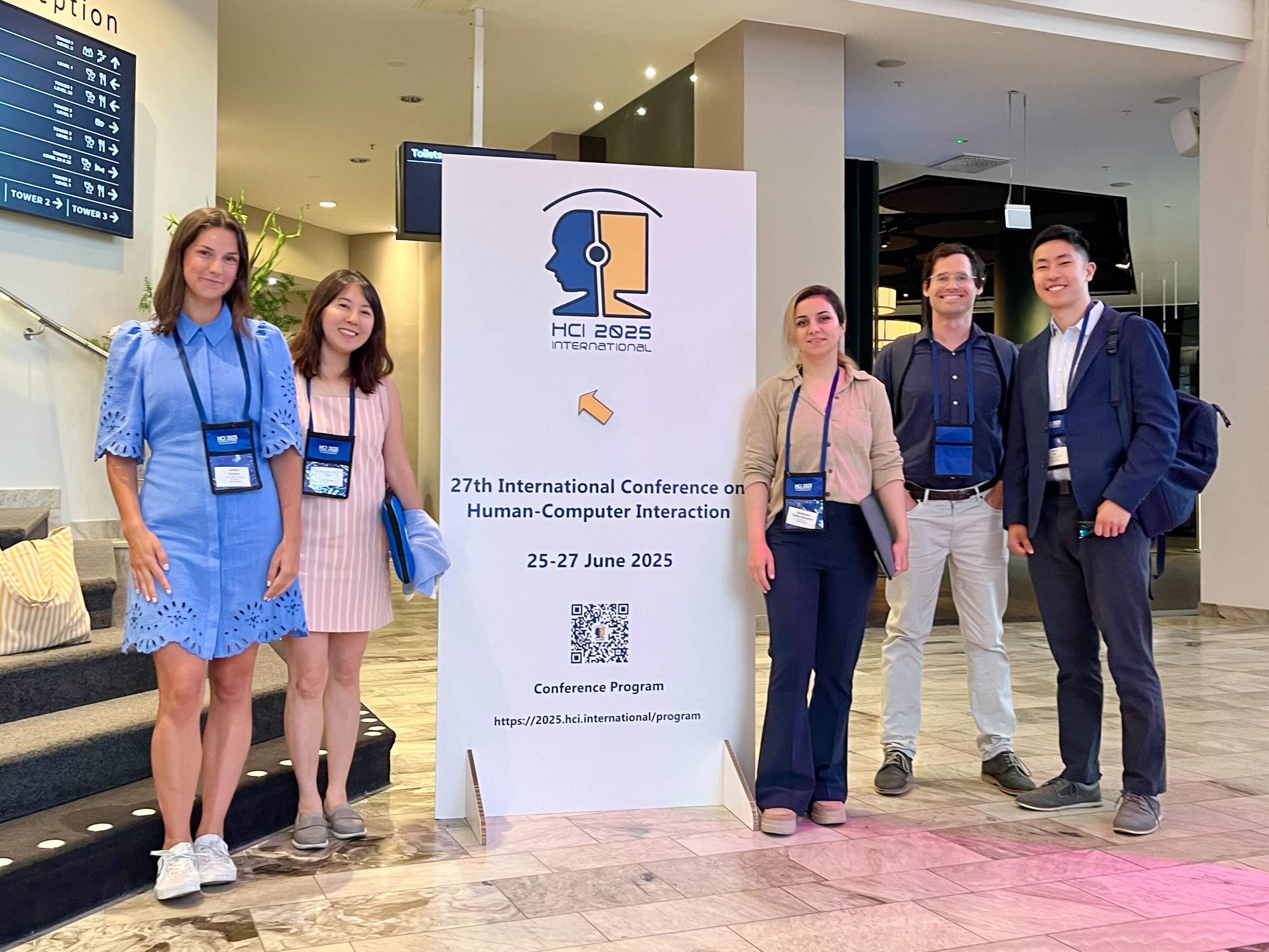AgeLab Researchers Travel to Sweden for HCII 2025
by Niels Wu
Six AgeLab researchers presented at the 27th International Conference on Human-Computer Interaction in Gothenburg, Sweden. The presentations constituted a session organized by Research Scientist Chaiwoo Lee titled “New technologies and the family caregiving experience - Studies from the MIT AgeLab,” and each explored a facet of how technology can help people prepare for and thrive in old age.
Lauren Cerino’s presentation was titled “Methodological Considerations for Studies with Older Adults Living with Dementia their Caregivers: Insights from a Dyadic Social Robot Study.” The study that Cerino discussed consisted of virtual interviews with people in the early stages of dementia and their family caregivers in which they were asked to respond to video clips demonstrating the capabilities of VGo, a telepresence robot with real-time audio and video communication features. Cerino’s presentation reflected on the design and execution of the study, noting where it succeeded, such as in allowing flexibility throughout the interview to accommodate participants’ needs; and learnings for future studies, such as taking note of variance in the reliability of social media platforms as a recruitment tool.
A presentation by Shabnam FakhrHosseini described a taxonomy of five levels of smart home technology: traditional, customizable, networked, proactive, and companion homes. The taxonomy was developed through expert interviews with scholars, technologists, and industry leaders. While companion homes do not yet exist, FakhrHosseini explained that will be able to monitor their residents’ emotions and behaviors, and mobilize an interconnected system of technologies and services to meet their residents’ needs.
Niels Wu’s presentation contained findings from a survey study examining family caregivers’ attitudes toward various digital technologies, including those powered by AI, as well as their openness to using such technologies for caregiving. The survey found that while most caregivers were experienced with using digital technology in their personal lives, they were less likely to have used it to support care-related tasks. However, curiosity and openness regarding using digital technology, including AI, for caregiving was high, with health monitoring emerging as a particular area of interest.
Adam Felts then gave his presentation, “Co-Design Workshop on AI for Caregivers and Older Adults.” The workshop brought together caregivers and older adults to brainstorm designs for new caregiving technologies powered by AI. Several of the prototype designs that participants developed supported communication between a care recipient and their care team, suggesting that participants saw personalized communication as a potential application for AI technology in caregiving.
Sheng-Hung Lee closed the session with a presentation titled “Mapping Aging in Place through AI and Robotics: A System Modeling Perspective,” which used qualitative interviews to uncover four AI archetypes to support functional and cognitive needs when aging in place: Advisor AI, which provides voice-interface answers and reminders; Butler Robot AI, which addresses dynamic needs such as deliveries or home monitoring; Valet Robot AI, which supports routine tasks like cleaning or grooming; and Systems AI, which operates interconnected machines for tasks like lifting objects. Lee envisioned pilot testing in the future to refine the archetypes and bring them into conversations regarding housing policy development.

